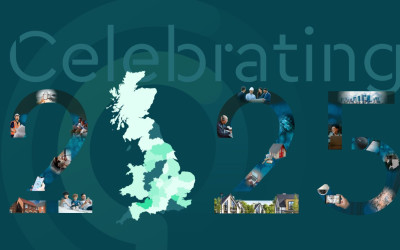Why we need to re-think fire safety
As many reflect on the Grenfell Tower Inquiry and its recommendations, it's important to recognise that the issues brought to light extend far beyond high-rise residential buildings. The challenges highlighted by this tragedy and highlighted in the report are not confined to one type of building or one type of issue, but permeate across our entire built environment, writes Tom Roche, of the Business Sprinkler Alliance.
Anyone watching may have seen a focus on high-rise buildings but if they looked close enough they will see that the changes put in place since the tragedy and called for in the Report are across the built environment. After all, if there are challenges with high rise structures why would there not be challenges with offices, warehouses and other buildings. The same contractors from the same industry groups used similar methods whether they be raw materials, regulations and guidance.
One only has to look at the Building Safety Act, born from the Grenfell tragedy in 2022, which has introduced wide-ranging responsibilities for designers and contractors. Importantly, and perhaps less well understood, these apply to all buildings, not just residential high-rises. This broader scope reflects a fundamental truth that the issues we face in fire safety and building regulations were systemic and universal.
One of the items that we have highlighted for some time is the widespread misunderstanding of building regulations and guidance. The Grenfell Tower Inquiry report makes this finding. It highlights that the Approved Document B (ADB), the go-to guidance for fire safety in common buildings, is often misinterpreted or applied incorrectly against the functional requirements of the Building Regulations. This confusion isn't limited to residential buildings, we see it manifesting in industrial and commercial structures as well, and that causes problems. There are different risks in those buildings, but they still need to be addressed proportionately.
For instance, we are currently investigating a case of a series of large buildings with no internal subdivisions and no sprinkler system. They are beyond the scope of the guidance, Building Regulations and their functional requirements still apply. How does this happen under the current guidance? The answer lies in the misinterpretation of that guidance and dare I say, a lack of enforcement. The scenario repeats the same issues that contributed to the Grenfell tragedy – misunderstanding of regulations and failure to meet functional requirements. So we need to be honest to see that there are some broader issues, perhaps with differing potential consequences.
The construction industry has long operated on a principle of compliance, meeting the minimum required and as the Report highlights without always fully understanding the intent behind the regulations. Government and industry can show they have acted. Yet many promised actions are yet to materialise and those regulatory items that are currently in operation are showing the signs of growing pains. It comes as no surprise the construction industry is facing a reckoning. With only 50% of submissions to Gateway Two in the new safety regime making it through, and 20% of submissions to Gateway One being rejected, it's clear that the industry is struggling to adapt to the new reality. This pain is necessary but also indicative of how far we have to go.
One area we have watched closely has been the approach to guidance. A programme was established, an outline plan and now an ageing update still sits on a lonely page on a government website. Much has been promised. It has been good to see positive action on instructing research, engagement and output. There are a collection of items on externals walls, sprinklers in high rise residential buildings, alert systems, a second staircase and lately the removal of national classes with sprinklers in care homes. However, the plans promised so much more.
However, as I read the Grenfell Tower phase 2 report I have to admit my heart sunk. It rightly highlights what has been apparent for some time that the guidance is not clearly understood by all stakeholders and once again asks for change. It highlights that research, funded by the public purse, struggles to find the light of day. What has become of research awarded from contracts in the last five years? Perhaps an update will be forthcoming as part of the response to the Inquiry report from Government in March 2025. I am left to ask myself again whether it is change we need or total reformation of the guidance. Madness I here some cry, but wait, I have just told you and if you look carefully we appear to be in a loop on guidance doing the same things expecting a different answer.
If you still think reformation is madness at least indulge me a little more. Should we not at least be asking whether our requirements and guidance are truly delivering the outcomes we desire? I sat in a conversation this morning where we discussed access to buildings and yet we still have not got our minds around egress for some of the most vulnerable. I stare at a picture of the flats in Dagenham and think about the other buildings over the last seven years that have been destroyed by fires leaving hundreds homeless and yet we treat them as some type of success.
In my world of commercial property, those large compartment buildings that are destroyed by fires and sit for months as rusting hulks after the fire has been wrestled into submission by most of the resource of one regional fire service. Is this a form of success? I cannot help but wonder if we are missing an element of resilience as much as we should? In an era of climate change and evolving urban landscapes, resilience should be at the minds of our building design and safety considerations.
The lessons from Grenfell are not confined to one sector of our built environment. They call for a fundamental reassessment of how we approach building safety across the board. It's time to stop looking through the narrow end of the telescope and start viewing the bigger picture. Only then can we hope to create a truly safe and resilient built environment for all.
For more information about the BSA visit the www.business-sprinkler-alliance.org
Additional news

Pulse Fibre marks landmark year of growth, partnerships and innovation ahead of 2026
Pulse Fibre is celebrating a milestone year of expansion across the UK as the business closes out 2025 with strengthened partnerships, major network growth and a continued commitment to supporting...
Read more
FIS first trade body to hit Conflict Avoidance Gold
FIS has proudly become the first trade association in the UK to be awarded Gold Status by the Conflict Avoidance Coalition (CAC), marking a significant milestone in the organisation’s journey in...
Read more